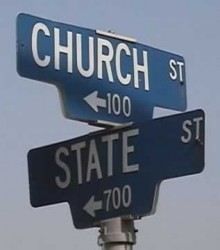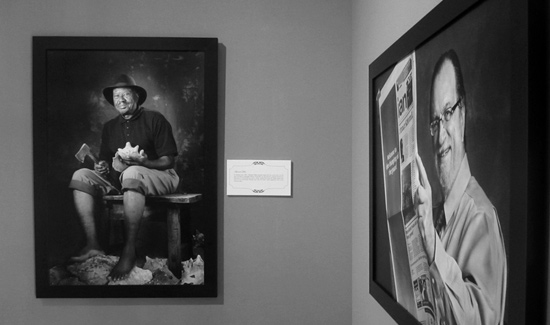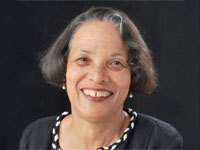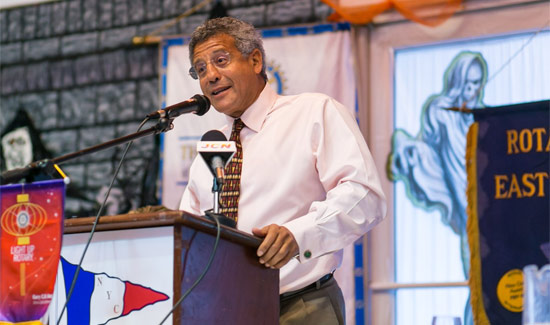 Since Vatican II, the Catholic Church has been turned upside down in the name of an ecumenical council whose true interpretation continues to be debated more than half a century after it closed. One point of contention is the Council’s teaching on religious liberty.
Since Vatican II, the Catholic Church has been turned upside down in the name of an ecumenical council whose true interpretation continues to be debated more than half a century after it closed. One point of contention is the Council’s teaching on religious liberty.
In his 1864 encyclical “Quanta Cura”, Pope Pius IX labelled as “erroneous” the opinion that the “liberty of conscience and of worship is the proper right of every man…[and that he is] not to be restrained by either ecclesiastical or civil authority”. Vatican II’s “Dignitatis Humanae” (2) rejects this teaching as it regards a person’s relation to the state.
Those who justify this reversal, such as Fr. Alphonse de Valk and Ryan Topping (Catholic Insight, April, May 2012) often do so on the common grounds that Dignitatis Humanae is only a “pastoral document”. Mr. Topping states: “instead of defeating heresies, of deepening matters of fundamental theology, good Pope John wished his council to be pastoral”. This incorrectly implies that the pre-Vatican II Church – the Church that condemned heresy and engaged the world in moral exhortations – was not pastoral. It also contradicts the 1985 statement by the Synod of bishops that it is not licit to separate the pastoral character from the doctrinal vigour of documents. What Topping is doing here is separating the pastoral from the doctrinal in order to then make the doctrinal subject to the pastoral. Modernists do essentially the same thing when, for example, they separate faith from science in order to make faith subject to science. It is a case of pastoral-minded opponents of dogma wanting Catholic doctrine to “witness” to the “pastoral” signs of the times.
Traditionally, and in every previous Council, there were only doctrinal statements and declarations and definitions. But precisely because these clear statements gave guidance to souls, it followed that they were truly pastoral. The whole concept of a pastoral document that is not doctrinal is radically new. This manoeuver conveniently allows Topping to claim in his article that “Vatican II provided no obvious key to its own interpretation”. In turn, this new “basis for a range of readings” of the Council allows Topping, Fr. de Valk, and others the freedom to interpret Vatican II in whatever “pastoral” vein they like under the pretense that they are still in continuity with Church Tradition. Thus, where the Church previously condemned (doctrinally) the “right” to religious liberty (“Quanta Cura”, Pope Pius IX) She can now (pastorally) approve it. Where the preconciliar magisterium rejected any separation of Church and State (“Libertas”, Pope Leo XIII) it can now determine it lawful.
Topping justifies his reversal of doctrine by attempting to de-myth the past. He states: “by calling ‘erroneous’ the view that liberty was a right, Pope Pius IX was defending Catholics against secularist who wished to dismantle the ad hoc legal provisions granted to the Church through the concordat system… After 2 world wars ….at Vatican II the question was not only how to preserve whatever customary ecclesiastical rights yet remained within an apostate European nation; the question became, what standard of tolerance for religion ought to be expected by any government, anywhere. What the Church defended in 1965 was not a modus vivendi between herself and states with a Catholic past, but a basic lowest common denominator across the planet.”
This rationale is faulty on several levels. First, Dignitatis Humanae does not mention the word “tolerance” as was the mind-set of the Church prior to Vatican II, but rather speaks of religious liberty in terms of being a “right”. The distinction was deliberate. Unlike the mere “tolerance” of error, a “right” implies the legitimate and uncensored ability to persist in one’s error – even if it is only at the level of the idea. Vatican II ought to have considered, and was indeed prepared to consider religious tolerance, which is something entirely different from religious liberty. The preparatory document that was prepared for the Council on religious tolerance is a gem of Catholic teaching, explaining how to adapt Catholic teaching to the times in which we are living, in which Catholic nations have been all but eliminated. The answer is tolerance of religious error and of the sects, for it is the lesser evil. Secondly, While the political situation in 19th Century Europe may have provided Pope Pius IX with the motive for issuing “Quanta Cura”, it is simply a leap in logic to conclude that the document’s condemnation of religious liberty was meant to apply only, and in a temporary way, to the 19th Century Church in Europe. If this were true there would be little reason today to place any faith at all in the infallible objectivity of any papal document. In fact Pius IX does include “America” and “the whole world” in his “syllabus of errors”. Thirdly, respected author Michael Davies has stated that after Vatican II “Pope Paul VI induced Catholic countries such as Spain, Columbia and Italy to change their constitutions by deleting any and all privileges given to the Church.” This begs the question: Why then did not Pope Pius IX do the same thing – in fact he did the very opposite – in Europe when he was confronted with the same underlying problem regarding religious liberty?
Also, appealing to the “basic lowest common denominator” to determine truth is a consequentialist- utilitarian argument which the Church condemns. Indeed, if this is how the Church formulates its teachings we would all have to kowtow to Fr. Rahner’s dubious “anonymous Christian” concept which Pope Benedict XVI has condemned in his “Principles of Catholic Theology”. Is this really how we should understand the passages in Gaudium et spes (22) which tells us “By his Incarnation the Son of God has “in a certain way” united Himself with each man” and “It is only in the mystery of the Word made flesh that the mystery of man truly becomes clear”(the emphasis is mine)?
Philosopher Fr. Martin Rhonheimer, in his essay The Hermeneutic of Reform and Religious Freedom, attempts – in a similar manner to Topping – to justify this idea of separating the pastoral from the doctrinal in order to make the doctrinal subject to the pastoral. He claims, for example, there is “no opposition” between what Pope Benedict XVI coined in 2005 the “hermeneutic of discontinuity” and the “hermeneutic of continuity”. True “reform”, he says , lies “in the interplay, on different levels, between continuity and discontinuity. While admitting there is a certain and present discontinuity in regards to religious freedom, he claims that this merely serves to “bring into view a deeper and more essential continuity” that being that the first Christians “did not demand that the State support religious truth”. According to Fr. Rhonheimer, Fr. de Valk, and Topping’s logic, it is ultimately the State, and not the Church, that decides, by its own inner mechanisms, what constitutes for the Church a human “right” where religious liberty is concerned – religious liberty being essentially a fluctuating function of how severely the church is being persecuted at any point in history? For the complete historicist, everything is true in its own time and place but that’s all.
For Fr. Rhonheimer to conclude that Vatican II teaching is a return to the religious liberty of the early centuries of the Church in the way he does is to play on the ambiguity of the term “religious liberty.” It can mean, for example, the freedom of Catholics to practice the true Faith, as in the early centuries of the Church, or it can mean the freedom of all religions, true and false, and of all people to follow all these religions. These are two entirely different things, and playing on this double meaning is essential to the modernist argument.
Indeed, the whole idea of separating the pastoral from the doctrinal is an evolutionary concept, and quite Hegelian. In Hegelian philosophy, the two are in interplay with one another, as are continuity and rupture. This interplay is, in Hegelian terms, an opposition between thesis and antithesis, creating a new synthesis. To say that there must be both continuity and rupture is for Catholics a contradiction, but for the modernist self-evident, a new order being constantly created by the interplay between continuity and rupture. Since, for the modernist, there is no objective truth or right – there is no contradiction.
If, as Pope Benedict XVI also recently stated, Vatican II’s teaching on religious liberty does put itself back “in full harmony” not only with the teaching of Jesus on the distinction between God and Caesar, but also “with the Church of the martyrs of all time,” why did not Pope Pius IX respect this truth in his condemnation of religious liberty? Was Pope Pius IX a heretic or was he also just being “legitimately” pastoral in an attempt to bypass previous teaching on religious liberty?
Topping further tries to justify his contradictory “back-and-forth” with church teaching by way of a causal argument. He states: “the post Vatican II Church in the contemporary world had become more effective [than the pre-Vatican II Church] at making her claims stick. Pope John Paul II’s interventions toward the collapse of Communism in 1989 are a dramatic case in point”. In fact, the reality is quite the opposite. Not only has Communism not collapsed in Russia, Russia has succeeded in spreading her errors to China, Cuba and throughout the world in the guise of socialism as foretold at Fatima. Today, the greater world is under total siege by militant atheism and soft totalitarian governments. Our Lord no longer reigns in our parliaments, in our constitutions, in our courts, in our schools, or in the affairs of our governments. Catholicism, in fact, is largely viewed as the last acceptable prejudice.
Continuing to justify his Hegelian hermaneutic, Topping makes further appeal to the Vatican II term “dialogue” in a way to suggest that the Church had never “initiated a dialogue with the modern world” prior to Vatican II. This is to give dialogue, and ultimately ecumenism, a meaning altogether foreign to Catholic teaching. In fact the Church itself penetrates the world from its very nature as its leaven and it can be seen historically to have influenced every facet of the world’s life – much more so before Vatican II than afterwards (where the exact reverse has taken place). Officials in the Church have always communicated with people in the world, such as non-Catholic governments. For the past several centuries it has been permissible to maintain open civil communication with heretics. The difference is that dialogue (the term was never used but nonetheless exercised before Vatican II) has sadly come to mark, in Topping and deValk’s view, a movement from the certain to the uncertain, the positive to the problematic; it essentially reduces evangelization from that of an authoritative proclamation to a dispute or conversation. This is nowhere more evident than in what many have called the Protestantization of the Liturgy which Pope Pope Paul VI authenticated and which Pope Benedict XVI has highly criticized on several occasions (eg.The Spirit of the Liturgy) and is in the process of correcting: the original translation of the Novus Ordo from Latin to English contained not only poor translations but literally and theologically false translations (pro multis for example).
Dignitatis Humanae states: “The truth must be sought…by means… of exchange and dialogue, by which some set forth to others the truth that they have found or think that they have found, in order to help each other reciprocally in the search of truth.”(No. 3). This, of course, can have a benign interpretation, namely that dialogue is simply an exchange on human value, but not on doctrine. However, this does not seem to be the meaning of the text as Topping and Fr. deValk understand it and as it is understood in greater Catholic circles, which requires both Catholics and non-Catholics to exchange with one another and to help each other reciprocally in the search of truth, as if dialogue were a means to discover the truth, and not the teaching of the Church. On this score Pope Benedict XVI, himself, has explicitly rejected the “ecumenism of the return” whereby non-Catholics are converted to the Catholic Faith (speech to Protestants at World Youth Day, August 19, 2005). Does this not mean that in religious matters Catholics have things to learn from schismatics, heretics and pagans? Is not this the relativisation of all truth? Hence the expression that praises the “salvific value of other religions”, and the death of the missionary spirit, which strives to convert to the Truth of the Catholic Church.
The Hegelian methods of reinterpreting, de-mything, and or of selectively eliminating Tradition which – contrary to Fr. Rhonheimer, Mr. Topping and Fr. De Valk – are not supported in Gaudium et spes (22), is essentially no different than when Catholic Modernists who favor abortion, contraception, homosexuality etc. reach behind the words of the Vatican II texts to carve out their own self-serving meanings. There is a false spirit – or “hermeneutic of discontinuity” – at play in both instances. Both represent rupture not reform. This kind of intellectually dishonesty in the guise of orthodoxy is what is preventing the Church from moving forward. It is the reason why the true spirit of Vatican II has yet to emerge – except in extremely minute quarters.
By: Paul Kokoski



